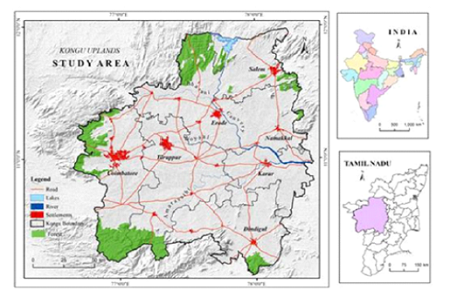
Geo-Eye
Department of Geography & GIS

Department of Geography & GIS

Geo-Eye
Year: 2019, Volume: 8, Issue: 2, Pages: 39-45
Original Article
P L Priyanka1, K Kumaraswamy2
1UGC-BSR Research Fellow, Bharathidasan University, Tiruchirappalli, 620024, Chennai, India
2Emeritus Professor-ICSSR Senior Fellow, Bharathidasan University, Tiruchirappalli, 620024,
Chennai, India
Received Date:16 July 2019, Accepted Date:22 November 2019
Water is one of the important resources especially in semi-arid tracts and identifying suitable management strategies are highly tactical. The present study is an attempt to suggest suitable management techniques for the study area viz., the Kongu Uplands. The Uplands is an extension of Deccan Plateau in Tamil Nadu which consists of 81 blocks and distributed over 8 districts in which it covers 25,000 sq km of geographical area. Overlay method with the help of Geographical Information System (GIS) has been adopted in the study. The eight parameters such as are land use/ land cover, cropping intensity, population density, water level fluctuation, groundwater potential and rainfall have been adopted and analysed. The overall result in general reveals that most parts of the Upland areas need to adopt moderate level of management strategies.
Keywords: Management; GIS; Overlay Method; Water Level Fluctuation; Groundwater Level; Cropping Intensity
© 2019 Priyanka & Kumaraswamy. This is an open-access article distributed under the terms of the Creative Commons Attribution License, which permits unrestricted use, distribution, and reproduction in any medium, provided the original author and source are credited.
Published By Bangalore University, Bengaluru, Karnataka
Subscribe now for latest articles and news.